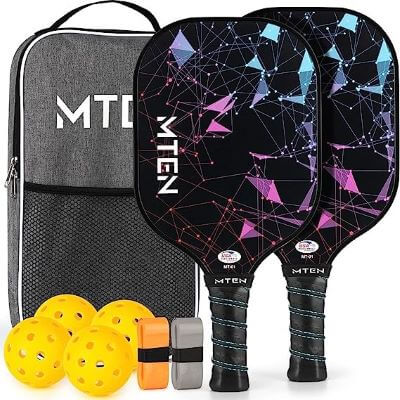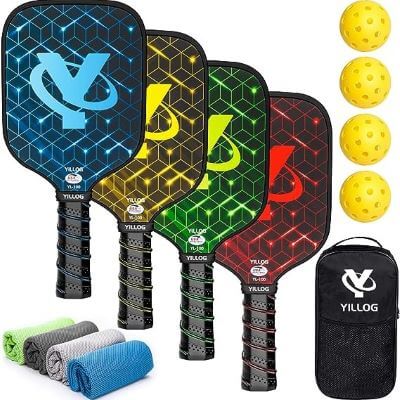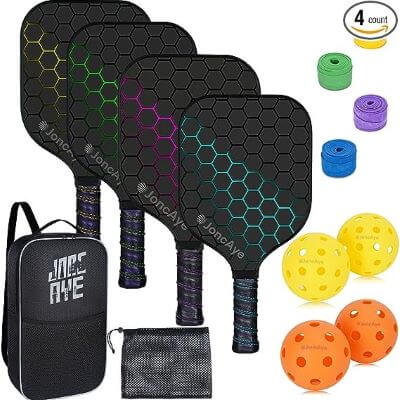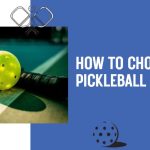Pickleball has become popular in recent years due to its relatively easy learning curve and fast-paced play. While it’s easy to pick up the basics of the game quickly, there are still some important rules and regulations to consider when playing pickleball competitively.
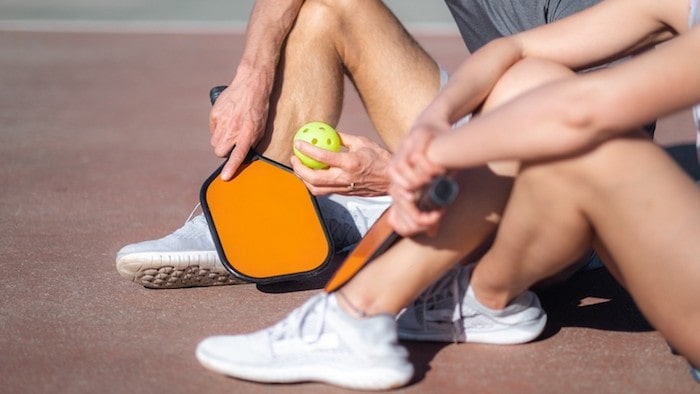
This ultimate guide will provide an overview of pickleball rules & basics.
As you read through this guide, remember that the most important aspect of any game is to have fun!
With the right attitude and understanding of the rules, you’ll be sure to have a great time as you jump into this exciting sport.
You Might Also Like:
Basic Pickleball Rules Overview
It’s very important to know the basic pickleball rules before you start playing the game.
Here, we have jotted down all the fundamentals rules, and given brief information for your better knowledge.
Keep reading to know better!
1. Court Dimensions
The court dimensions are 44 feet long by 20 feet wide. Each side has two 7-foot service boxes marked off near each end line. There are also non-volley zones extending 7 feet from either side of the net to prevent players from spiking or volleying close to it.
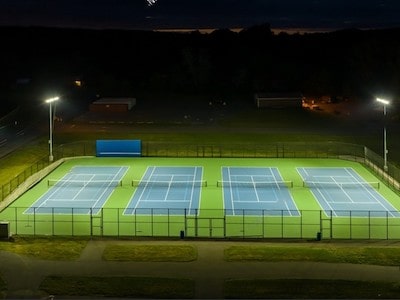
In order to score points, players must hit their shots over the net. So they land inside their opponent’s service box or outside their playing area.
2. Scoring System
A pickleball game played to 11 points. But can be adjusted according to the player’s preference. Points are scored when one team cannot return the ball to their opponent’s side of the court, as well as when a fault has been made (a violation of rules).
3. Standard Serves
The server must hit the ball underhand with an underhand stroke from behind their baseline towards their opponent’s non-volley zone line (NVZ line). The serve must land within 2 feet on either side of this NVZ line and must be hit below waist level for it to be considered legal play.
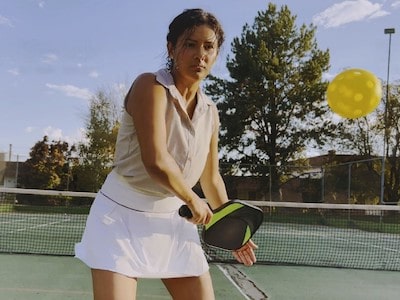
4. Types of Shots Allowed in Play
Players can use any stroke they wish while playing pickleball, including volleys, ground strokes, lobs, or smashes. So long as they remain within the bounds of what’s considered legal play per its rulebook regulations (i.e., no double hits or carrying/lifting/throwing).
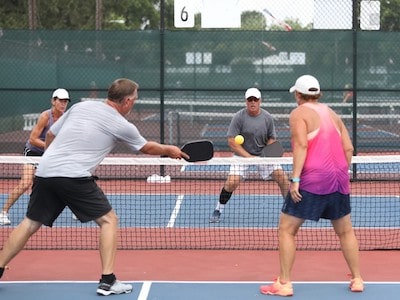
5. Volleying Rules & Restrictions
Volleys are allowed only after clearing a net that measures 36 inches tall at its center. If a player volleys before crossing over onto his/her opponent’s side of the court. Then it is considered illegal play and results in an immediate point for his opponents’ team (or loss of serve if serving).
Additionally, players may not volley from inside their non-volley zone line either – doing so would also result in a loss of serve or point for the other team depending on the circumstance(s) surrounding shot attempt(s) if any exist(ed).
6. Faults and Let Calls
A fault occurs when one player violates any rule regarding how to properly execute shots during gameplay. This includes double-hitting shots off one paddle strike or failing to clear the net with volleys before landing on your opponent’s side etc…
When such violations occur, then let calls must be made – letting opposing teams know that a foul has taken place. Allowing them the opportunity to retake possession without having lost points altogether.
7. The Non-Volley Zone (NVZ) Line Rule
This rule states that no player may make contact with the ball after serving. Until it has cleared over the net into the opposing team’s court area first; if contact occurs prior, then a “let” call should immediately follow, indicating a fault. Thereby resulting in a loss of serve/point depending upon the circumstances of the incident itself.
Additionally, NVZ lines measure 7 feet from each end baseline respectively, so players know where exactly they should not step up.
Strategies to Improve Your Pickleball Game
To improve your pickleball game, you must practice regularly and use effective strategies. First, focus on your footwork; the better you move on the court, the better your shot-making will be.
To ensure you have the best knowledge regarding the strategies, here is some basic information, that one should know for a better game.
1. Serve Strategies
The service is the most important shot. So, it is important to develop an effective strategy to gain an advantage over your opponent and set yourself up to win points quickly and consistently.
Different strategies can be used depending on the situation. Such as hitting a deep serve, drop shots or angle serves that will leave your opponent off-balance or force them out of position.
Additionally, serving with spin can add variety and make it more difficult for opponents to return the ball accurately.
Practicing serves regularly will help you become more consistent and confident when using these strategies during a match situation.
2. Return of Serve Strategies
When returning to serve there are several different strategies you can use depending on your own skill level and what type of server you are facing off against – aggressive servers require defensive returns whereas weak servers require offensive returns.
If possible, opportunities arise for attacking shots such as hard smashes or drop shots… It is also important to be aware of court positioning when returning the serve.
3. Shot Selection
The ability to correctly identify which types of shots would best suit each particular situation comes with experience. But also requires tactical thinking about what type of shot would put opponents under pressure while simultaneously creating space for oneself on the court.
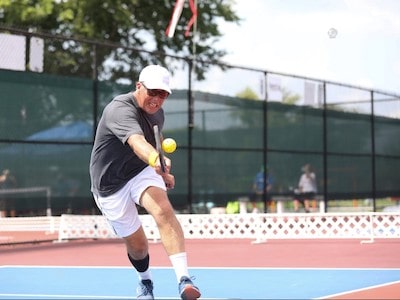
4. Strategy for Doubles Play in Pickleball
An effective doubles team must have good communication between partners. They need to strategize together before each point begins by deciding who will hit first (the server) & who will support their partner’s hit (the second player).
They also need to decide whether they should use a strong return together against weaker opposition or choose specific areas within their opponents’ court.
Additionally, teams must remember that they need to cover all angles around the net post strategically. Since there might not always be enough time to recover back into position after rallying. This often requires one teammate to take the initiative & directing others away from the net post so that both players remain covered at all times throughout games.
Basic Pickleball Tips for Smart Play
Pickleball is an enjoyable game that requires skill and strategy to be successful. It can be played by all ages and abilities.
To ensure you have the best time possible, here are some basic tips for smart pickleball play.
- Know the rules: Familiarize yourself with the official rules of pickleball before you start playing.
- Use proper equipment: Make sure your paddle and ball meet the standards set by the USAPA.
- Get into position: Before each serve, move to a spot that puts you in an advantageous position to return it.
- Practice basic shots: Mastering simple skills like dinks, drives and lobs will help improve your game.
- Stay mobile: Keep your feet moving on the court by taking short steps and staying light on your feet.
- Be patient: Don’t rush or make decisions too quickly; take time to analyze what’s happening around you before making a move.
- Communicate with teammates: Talk through strategy and share tips during games; communication is key for successful play!
- Focus on positioning & footwork: Positioning can be key in pickleball since it helps give players an advantage during rallies; practice proper footwork to get into position quickly
Don’t forget to have fun while playing!
FAQs
The five basic rules of pickleball are as follows: the serve must be an underhand stroke; each player is allowed only one serve and is required to alternate serves with their opponent; the ball must land in the correct court diagonally from where it was served; a point ends when either side commits a fault or when the ball goes out of bounds; and players may not hit consecutive volleys. Additionally, all shots must be made below waist level.
The most important skill in pickleball is the ability to read your opponent. Knowing when to hit a deep shot, when to go for a drop shot, or when to use a lob can make all the difference in a game. It is also essential to be able to anticipate your opponent’s shots and be ready with an appropriate response. Knowing where the ball will land and having quick feet are also essential skills that help players win games.
Firstly, it is a great way to stay active and healthy. Playing pickleball can help increase your physical strength, agility, and endurance as well as improve your hand-eye coordination. Secondly, it provides an excellent social outlet for players of all ages and skill levels. It’s easy to learn the game, so you can have fun playing with family or friends while enjoying some friendly competition! Lastly, pickleball is one of the most affordable sports out there with minimal equipment required.
To play pickleball, you will need a net, two paddles (also known as “racquets”), a plastic ball with holes (the “pickleball”), and optionally court markings for doubles play.
In singles games, the winner is the first player to reach 11 points with at least 2 points more than their opponent. In doubles games, the winning team must reach 15 points with at least 2 more points than their opponents.
Well, It’s a Wrap!
With its simple rules and easy-to-learn basics. It can be enjoyed by players of all ages and skill levels. Whether you’re new to the game or an experienced player looking to brush up on the rules.
From court size and equipment requirements to scoring systems and strategies for improving your game, understanding the fundamentals is essential for success on the court.
Grab your paddle(s), gather your friends together, head outside (or indoors!), and enjoy some friendly competition.
We hope that this overview of pickleball rules & basics guide makes your experience all the more enjoyable!

I am the founder of BallSportsPro, a popular pickleball resource for players of all levels. I am a former professional tennis player, started playing pickleball in 2009 and quickly fell in love with the game. I launched BallSportsPro in 2018 to share my passion for the sport and to provide pickleball players with the latest news, tips, and gear reviews. Today, BallSportsPro is one of the most popular pickleball resources on the web, reaching hundreds of thousands of players each month. In addition to running the website, I also a regular contributor to Pickleball Magazine and a member of the USAPA Pickleball Ambassadors program.

